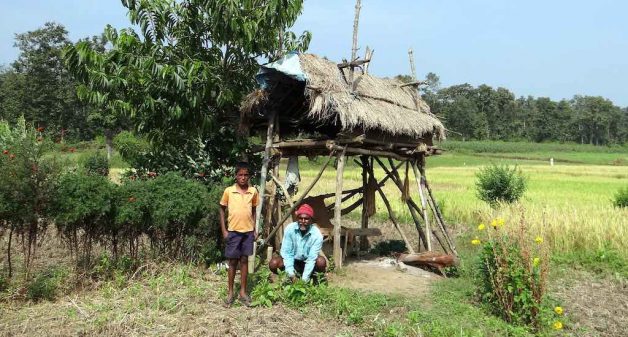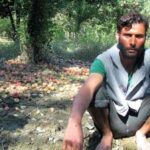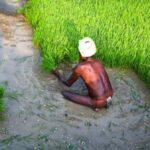India has taken the first step in providing basic income support to small and marginal farmers owning up to 2 hectares of land. This is to be a direct benefit transfer (DBT) of an annual Rs 6,000 in three installments. The government hopes this will act both as income support as well as for buying inputs.
I will refrain from ascribing political intents to this provision. I am not interested if this is populism close to elections or a measure to counter the allegedly game-changing announcement by a rival. Suffice it to say that an annual spending of Rs 75,000 crore will not break the back of our economy. The issue is whether it is optimally deployed or not.
I presume that the procedures for making this transfer will be laid down and implementation will begin in the next three months. There are three issues connected with this. First, who will this help? The second is what purpose would this serve. The third is the continuation of the neglect of feminization in agriculture.
Who will this help? The Finance Minister in Budget speech said any farmer who has land of 2 hectares or less will get the benefit. Let me not get into this equal treatment of farmers in rich irrigated tract growing three crops a year, and those in drought-prone areas growing one decent crop in three years.
So, if one has a farm of less than 2 hectares, then one gets Rs 6,000. I have a small farm plot of about a tenth of a hectare. Am I also eligible? If yes, thank you FM sir, but really I do not deserve your largesse.
Landless excluded
Since this provision is only for farmers, landless families are clearly excluded. Wisdom of doing that is debatable. But clearly, exclusions need to be defined to avoid waste of public money. The hard issues are about lakhs of cases of farmers whose ancestral properties have not been formally distributed and the land remains in the name of a parent gone years ago.
There are also situations of smallholder tenant farmers; and an even larger number of sharecroppers, most of them in the extremely feudal and awfully poor parts of the middle and lower Gangetic belt. The squatters in choar land or illegal migrants from across the border will of course be excluded. Those who have land allocated under Forest Rights Act will have perhaps an uncertain status.
Role of banks
One hopes that procedures will account for these realities in a manner that is consistent with the spirit of the announcement. The second issue is about the banks. This is a DBT scheme and money will go in the farmers account.
Will they, the banks, allow the money to reach the farmer or force-adjust it against his past dues? And does this move then become an easy route to reducing rural non-performing assets of our banks, which have always been reluctant business partners for farmers?
Timing of release
If the banks do not appropriate the amount for debt recovery, then the actual utility of the amount for the purpose of carrying on farm business will depend on the timing of its release. Can the system ensure for instance that this amount is released a month ahead of sowing season or, if actual funds flows become messy, can Kisan Credit Card accounts be credited with like amounts before they are to be used for buying inputs?
Rs 2,000 does not go very far for an income-starved household, and unless the release is timed well, the chance that it will be applied elsewhere is high. I can only hope that makers of country liquor do not expand their business.
Women excluded
The third facet is a hard reality. Most farmers defined by landholding are men. They are also most untrustworthy in ensuring good income utilization for family welfare. Most farmers as persons engaged in actual farm operations are women. No one in the formal banking or state sector has yet recognized this reality fully. If bank accounts are in the names of the males, chances that women farmers will get this money to use for farming diminish further.
Without demanding a fundamental change (such as saying that give the same sum to all rural families and not just farm families), is there a way out to ensure that this money is spent for the purpose of providing relief to farm families? Perhaps there is.
Including women
Under the government-run National Rural Livelihoods Mission programs now in operation in most states, huge numbers of women self-help groups (SHGs) are set up, and a fair proportion of them are operational. There is also an active quasi-state machinery that services them. It may perhaps be possible to require them to put in some extra effort.
Let each SHG require the members to give a copy of their land patta (deed), vet it at their end and submit the list of women farmer members along with their family’s landholdings to the system. The money then is released to the SHG, which in turn will give it to women farmers at the right time.
There will be some work needed to eliminate multiple fraudulent claims made by a small proportion of families availing the fact of more than one woman of the household being member in a SHG. But the institutional format of the SHG movement has time and again demonstrated that it has greater inherent honesty and integrity than most other parts of the Indian banking and finance system.
Good intentions
I sure applaud the spirit of wanting to help the farmers. But I apprehend that given the operational issues, some of which are outlined above, the chance of this scheme turning out to be useful is not very bright.
In my earlier column I had stated that to address farm distress, fundamental shift away from an entrenched urban bias in our economic policies is needed. I reiterate that point, and therefore to me, this scheme is more of a paternalistic dole than a practical step to solve any problem.
Sanjiv Phansalkar is associated closely with Transform Rural India Foundation. He was earlier a faculty member at the Institute of Rural Management Anand (IRMA). Phansalkar is a fellow of the Indian Institute of Management (IIM) Ahmedabad. Views are personal.








